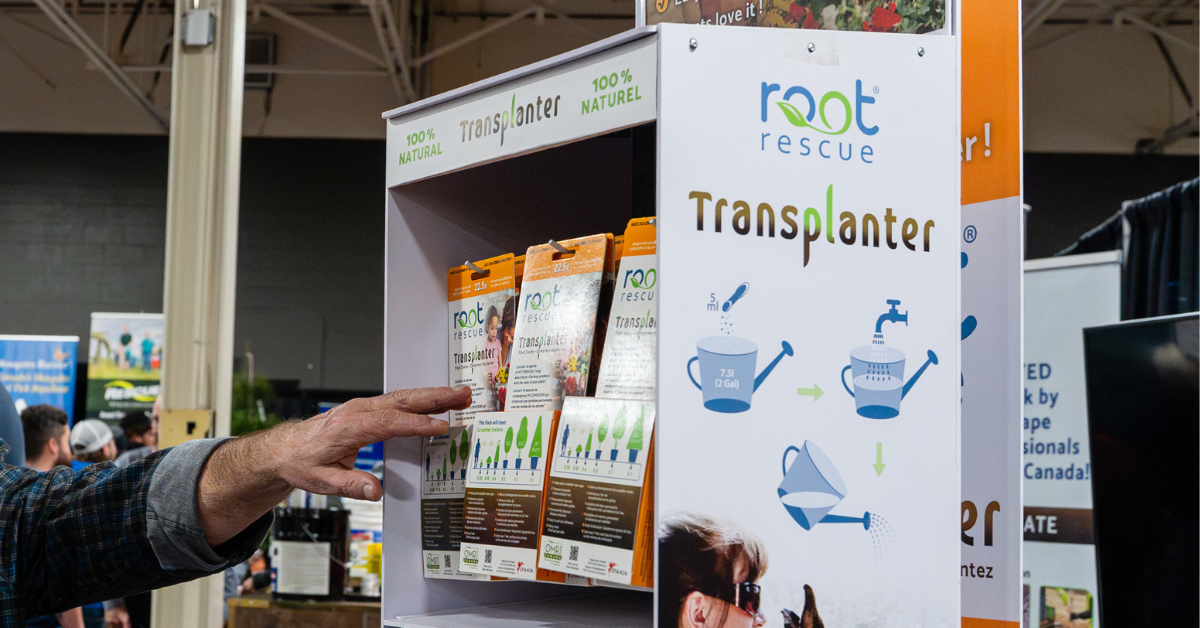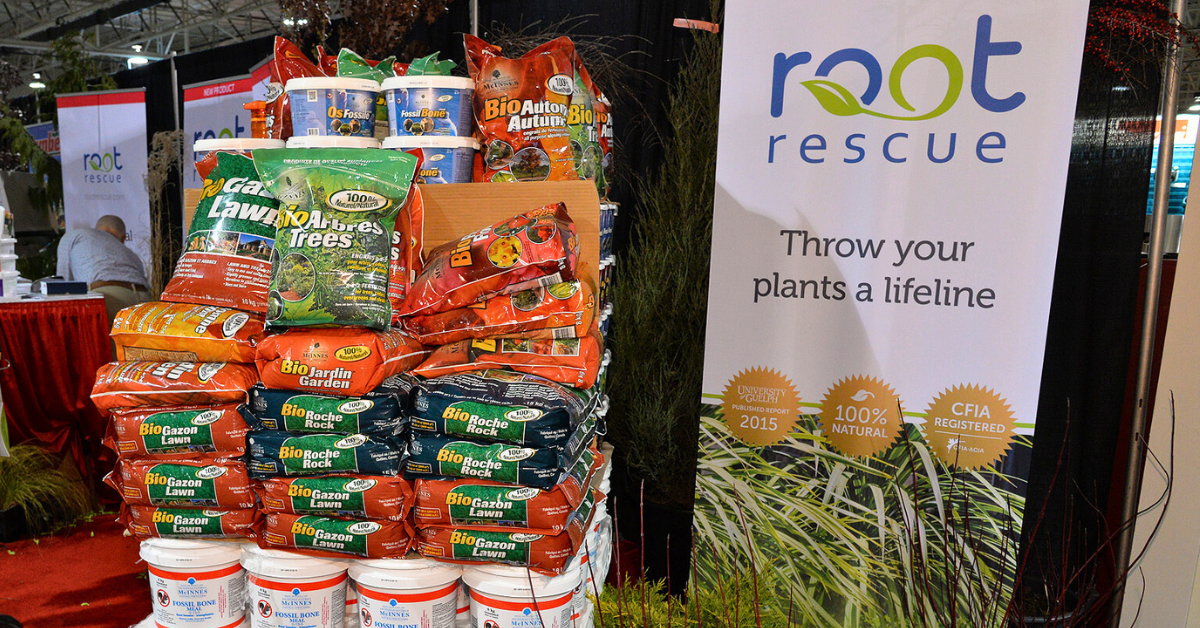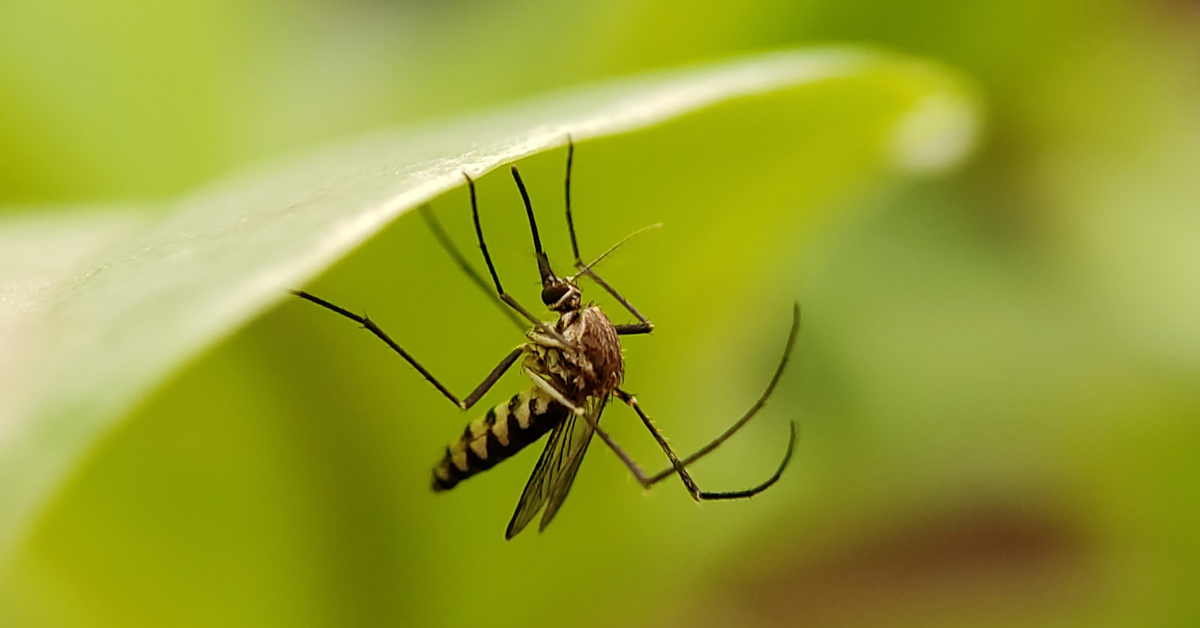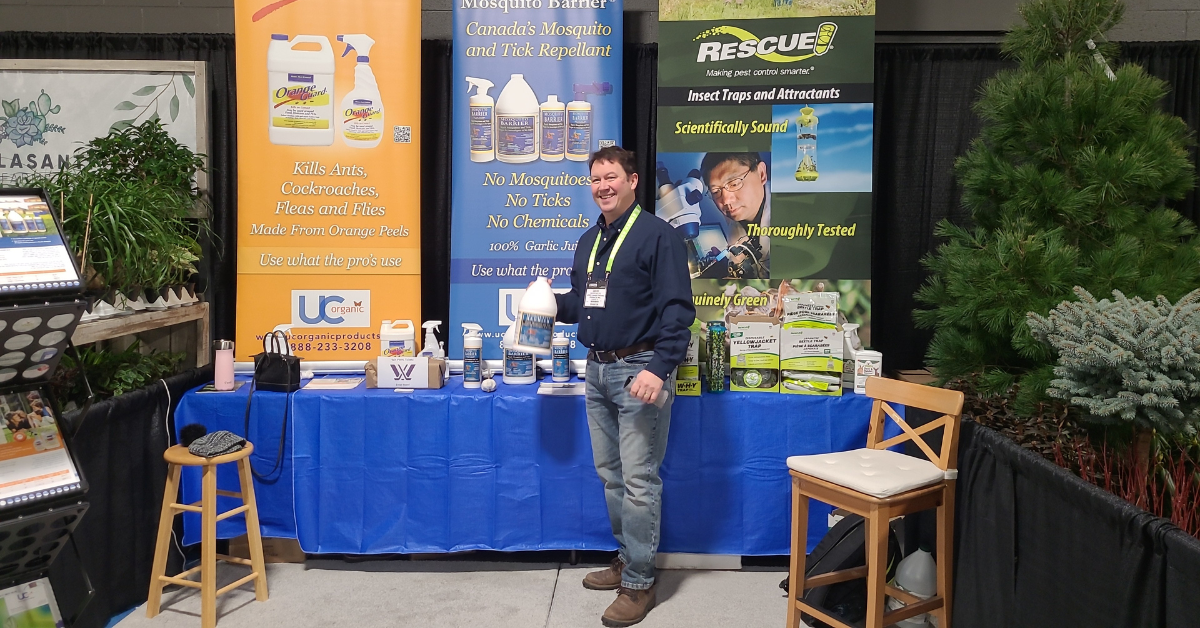February 14, 2024

Something to believe in
Bringing new products to market is no fairytale, but for these two entrepreneurs, the happy ending was well worth the effort.
As any entrepreneur knows, launching a business or introducing a new product is an exercise in exhilaration… and in frustration. The brainstorming, the blue-sky dreaming, the tinkering with prototypes — this stage is energizing. On the flip side, there are setbacks, delays and a stream of red tape. So much red tape.
Alice, from Lewis Carroll’s Through the Looking Glass, said: “There’s no use in trying. One can’t believe impossible things.” The plucky entrepreneur, however, will quote the Red Queen: “Why, sometimes I’ve believed as many as six impossible things before breakfast.” If she wasn’t a fictional antagonist, perhaps the Red Queen would be an entrepreneur herself. She might even read Landscape Trades.
If you’ve ever dreamed of launching something entirely new, you’re not alone. Bob Reeves, proud founder of Root Rescue and David Smorenburg, president of Upper Canada Organic Products, recently took the time to share their journeys with Landscape Trades.
The believers
Reeves and Smorenburg both believed in something that seemed impossible. And then, through a lot of hard work, they made it possible. Each had a landscape and horticulture-related product they felt filled a gap in the marketplace and had the potential to make a positive difference. They soon discovered that getting a niche product developed, validated and approved for sale in Canada takes a lot of grit, patience and perhaps a pinch of naïveté.
Reeves started Root Rescue after discovering the virtues of Mycorrhizal Fungi over 20 years ago. Today his flagship product, Root Rescue Transplanter, is available in garden centres, nurseries and online. Reeves developed the product, designed to improve soil health, from scratch with the guidance of Dr. Mike Amaranthus, a research soil scientist for the US Department of Agriculture and associate adjunct professor at Oregon State University. Now it’s popular among landscape contractors, home gardeners, nursery growers and even municipal grounds maintenance crews.
Smorenburg’s story begins six years ago, when he gained the Canadian distribution rights for a garlic juice-based pest control product from California. He soon learned that he’d have a lot of regulatory hoops to jump through. Thanks to Canada’s stringent pest control product regulations, the new product would have to endure the same rigorous compliance process as organophosphate pesticides.
Both Reeves and Smorenburg are glad to be where they are today and agree that although it wasn’t easy, it was worth it. They both credit their success to a lot of support from the spouses, families, friends and colleagues who joined them on their longer than expected journeys.
Greening from the ground up
The Root Rescue story technically began in 2003, but you could say the seeds were sown long before the product was even a twinkle in this fun guy's eye. Reeves grew up in the nursery and garden centre his family owned and operated for generations. He worked alongside his siblings and managed the landscape and perennial department of their nursery. “One of my constant frustrations was the number of plants — that I knew were perfectly healthy and in great shape — coming back to the garden centre on warranty. They were dying. They were not adapting to their new homes, even though I knew there was nothing wrong with the plants whatsoever,” Reeves said. “The cost was terrifically wrong.”
So he began to search for a solution. At first, he tried the traditional fertilizer methods he’d been taught. “I was told all my life that it's all about chemistry, essentially. If your soil chemistry is where it should be, your plants will do well. That turned out to not be precisely the case,” Reeves said. “In fact, the story of plants and the relationship they have with their environment is entirely about biology.”
Now on a mission, Reeves began to dig deeper into soil health. He met Dr. Amaranthus at a trade show in Chicago, who introduced Reeves to the science behind the soil microbiome. The pair struck up a collaboration and developed a formulation that allowed specialized fungi and bacterium to benefit a broad spectrum of plants — one that would work as well for a pine tree in Ontario as for a tomato plant in B.C.’s Fraser Valley.
Reeves began to test his new mycorrhizal-based product at his nursery, as well as in landscapes he’d been hired to design and install. This was the perfect control environment to see whether he could reduce the amount of dead plants being returned. “This took out the wildcard of the client doing the wrong thing,” Reeves said, also acknowledging that plants can die even if installed and maintained by trained professionals. “When we tried this new consortium approach of mycorrhizal beneficial fungi, the losses that were previously at a painful level up here,” he gestured to his forehead, “dropped to near zero, if not zero. That cemented the tech in my mind as being real.”
This process took a few years. Reeves was adamant that if he was going to take the product to market, it had to be certified by the Canadian Food Inspection Agency (CFIA) and not just be labelled, as Reeves joked, “Bob’s Magic Stuff.”
“I wanted to put a product that had a guaranteed analysis that was certified and registered with the CFIA,” Reeves said. He also applied for an Organic Materials Review Institute (OMRI) listing. “All of these things were very important to me to give the product that third-party endorsement that it is what we say it is. The regulators agree that it is safe and it doesn't have any unwanted guests in it that you wouldn't want to have in the mix.”
Reeves describes the next phase as “the grinder part of the story.” After submitting his formulation to the CFIA in 2008, it took seven more years to reach the next step. “The issue was that I was bringing them something they'd never seen before. They were used to petrochemical, linear technology with one active ingredient with a label that says ‘do this with that plant and this will be the result.’ My product had 18 different active ingredients and performed multiple benefits across a broad spectrum of plant materials,” he said. This was completely upside down as far as the regulators were concerned. “There was much hand holding and hand wringing and fretting and stalling on their side for many, many years.” Eventually, Reeves got the registration. “The [regulators] followed the principle of what they're there to do, which is to prevent the public from getting something that does the wrong thing or introduces something unwanted into the ecosystem that does collateral damage,” said Reeves.
To build his case along the way, Reeves gained the support of professors at the University of Guelph who conducted independent testing. His application to the CFIA included results from field tests the university had conducted over four years that confirmed the mycorrhizal fungi formulation did indeed improve a plant’s ability to extract water from soil by 35 per cent.
While he continued to wait, Reeves worked on other aspects of his new business: “All of these things needed to come together, and while I was waiting for the light to finally get switched on in Ottawa, I started pounding away on all of these issues.” He copyrighted the brand name “Root Rescue.” He built a website, settled on a price point and began developing a marketing plan. He created the first design iterations of packaging, knowing the CFIA would have to approve the labelling and any claims he would make on the package. And most importantly, Reeves continued to foster relationships within the landscape and horticulture community, from academics to contractors to retailers.
To keep the lights on, Reeves worked a variety of jobs. “I didn't just stand around drumming my fingers and thinking ‘how am I going to pass my time here?’ I took some lateral moves, but they were always within the industry. Always kept me in contact with people who would ultimately be colleagues or customers. And that was, I guess, a kind of master plan approach to the situation,” Reeves said. These jobs included landscape design and garden centre sales. He also collaborated on the creation of a landscape design/build software solution called DynaScape. You might have heard of it.
Patience is a virtue when waiting on bureaucracy, and Reeves was realistic about the timeline. “I knew that if I expected too much from this thing too quickly, I'd be the one who would kill it. You have to have a kind of patience, a kind of grit — you have to understand there's a beginning and a middle, and if you try to rush to the end, you're just gonna end up running out of road financially.” The registration for Root Rescue Transplanter was finally issued in December 2015.
The little start-up that could
Over eight years later, Reeves is enjoying his spore success. “We have fully appeared in the marketplace and survived, and we’re not just ‘a flash in the pan.’ It's fun to be a startup that didn't fail. I think the math says only about half of one per cent of startups actually survive. The odds are against you.”
Reeves says Root Rescue is still a “one-man show.” Instead of carrying the overhead of a brick and mortar business with a large staff, he contracts thirdparty vendors when he needs services — from accounting and marketing, to warehousing, blending, packaging and distribution. “Many of my systems are automated in the sense that others are taking care of parts of the business without having to be on my payroll. There are a lot of specialists out there and now you can reach in and use their services on a fee-for-service basis. That is a wonderful cost control system for businesses like mine that are highly seasonal and still growing.”
Mosquito, tick and maybe vampire control
If you think importing a ready-made product is easier than developing one from scratch like Reeves, you’d be wrong. Canadian regulations for imports are stringent, and even though a product might be approved elsewhere, it still needs to pass muster north of the border.
Once a commodity buyer in the food ingredient industry, David Smorenburg knew he wanted to start his own business. He wasn’t sure exactly what it would be, but it had to be “green.”
Inspiration came one day after his father sprayed a messy pesticide on the fruit trees in his yard. “The black tar overspray went all over the kids' small plastic chairs and didn’t wash off with the garden hose. Seeing this, I knew there had to be something more environmentally friendly to keep pests down,” Smorenburg said, adding that a Google search resulted in very few ‘green’ pest control products available to Canadians at the time.
Smorenburg discovered a company in California making a garlic juice-based product that had great success repelling pests, such as mosquitos and ticks. He learned that when crushed, garlic creates 33 sulphur compounds. The spray his father used also contained sulphur. Suddenly, the connection made sense. “With little choice for less toxic pest control products, this seemed like it could fill a void in the marketplace,” Smorenburg said, and so he set out to do just that.
“I negotiated the rights to Garlic Barrier and Mosquito Barrier for Canada. My previous job was in the food ingredient industry so I was very familiar with garlicbased products. We have always been a ‘green’ family so it seemed a no-brainer at the time.”
Little did he know
Smorenburg had no idea it would take so long to gain approval to sell these products in Canada. When asked if he would have proceeded with the business idea had he known it would take six years, Smorenburg said: “Two to three years was originally the most I would have considered. So maybe it was better I didn’t know.”
Like Reeves, Smorenburg leaned into research. Instead of the CFIA, Garlic Barrier and Mosquito Barrier needed approval from Health Canada’s Pest Management Regulatory Agency (PMRA). “The PMRA’s website gave me most of what was needed, and they offer a pre-consultation service so they can give specific information back based on your label claims. Little did I know at the time that Canada’s regulations were (and still are) so much more strict than those in the USA and I was in for quite an education.”
Smorenburg submitted the U.S. labels for both products. Since they’re considered agricultural products, they are exempt from federal registration in the U.S. as the ingredients fall under the food exempt list. “Canada does not have this exemption list. At the time, the same regulations to get a product approved in Canada were the same for garlic juice as they were for organophosphate pesticides. Chronic toxicity tests were needed,” Smorenburg said. “It was a pretty large hill to climb for a newcomer to the PMRA.”
Luckily, Smorenburg didn’t have to face this hill alone. “My wife was so supportive. My father had a chemistry background, and my brother had a degree in science,” Smoreburg said. “I also found support in some environmental organizations, like the Canadian Association of Physicians for the Environment (CAPE), the Canadian Environmental Law Association (CELA), and the David Suzuki Foundation. A member of CELA was on the meeting group of the PMRA’s consultation committee and used our submission as an example of the burdens of bringing less toxic products to market.”
Despite the encouraging support, Smorenburg says he received little help from elected MPs or his local MPP. He received rejection letter after rejection letter from PMRA and it started to seem like maybe this endeavor was impossible after all. One day, he got another letter in the mail. Smorenburg briefly scanned the opening paragraph which addressed previous deficiencies, and assumed it was another rejection letter. He set it aside without reading the whole thing, describing it as “a moment of great despair.” Luckily, his wife Kristine was more thorough in her reading. Turns out, it was excellent news.
“After almost six years of gathering data, testing, and investing of time and money, we finally received our first Pest Control Product numbers,” he said. Smorenburg could now sell his products through his new company, Upper Canada Organic Products.
He and Kristine started cold calling and exhibiting at trade shows. “Our very first show was the Guelph Organic Conference,” Smorenburg said. “It was a smaller show, but Guelph is home to some of the largest AG companies in Canada, a great school, and also a large environmental movement. We were hit with it all. It was learning by asking questions and getting asked questions.”
Exhibiting at the trade show helped Smorenburg realize he needed more education. He earned his exterminator’s license for mosquito and biting fly control, as well as for structural pest control, to better understand the challenges faced by professional pest control operators. This proved to be a sound strategy as acceptance and use of their products began to grow. Smorenburg said, “If the pros were using our products, we knew consumers would, too.”
Upper Canada Organics currently sells its pest control products in garden centres, pharmacies, hardware stores, seed houses and farm retailers as well as through their website. “We cover a lot of industries and it has been so rewarding learning about each,” Smorenburg said. “Driving sales through our distributors and retailers is key. We have spent very little on advertising. Growth has been mainly organic but there are always new opportunities presented to us and each one is considered carefully.”
The company plans to scale by creating more product lines through research and development and improving customer awareness of integrated pest management.
Words of wisdom
Reeves and Smorenburg dared to believe in the impossible. It led both entrepreneurs on circuitous journeys they didn’t foresee but don’t regret. After all, some things just can’t be rushed, and they don’t have to be done alone.
“Frankly, I consider myself to be immensely lucky,” Reeves said. “I mean, how many people get to do the thing they love and have a measure of success at it? I’ve had the support of my wife, which has been invaluable. I’m thankful for that.” He added, “It would have been nice to get to this point earlier in life, maybe. But 20 years ago, the world wasn’t ready for this. All of it brought me here today. Maybe I've arrived exactly where I should be, when I should be. That's, I think, probably super important for anybody who's trying to make a go of anything in life. Be where you are, and enjoy it.”
And when challenge after challenge begins to wear you down, Smorenburg insists you keep going. “Never give up. Don’t get too high and don’t get too low. Running a business is a roller coaster ride sometimes. Take a deep breath and keep moving forward. Remember the people who have taken a chance on you. We are very grateful to the many who have given us a hand up when needed.”
See, Alice? When something seems impossible, do your research, then do some more. Surround yourself with knowledgeable champions. Stay focused on your mission. Make use of time spent waiting. And read your letters from governing agencies all the way through.
You’ve now learned about two impossible things. Can you think of four more before breakfast?

Bob Reeves is the founder of Root Rescue, located in Waterdown, Ontario.
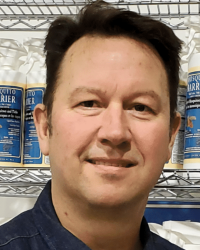
David Smorenburg is the President of Upper Canada Organic Products, located in Etobicoke, Ontario.
